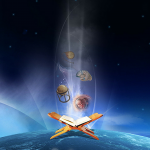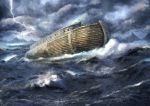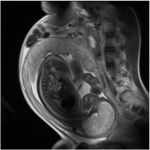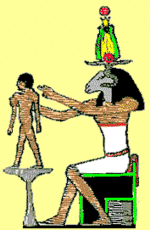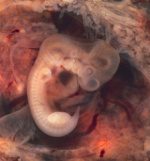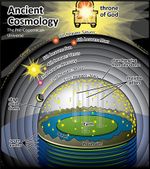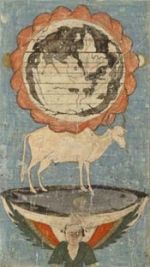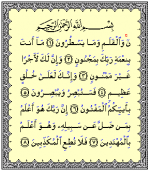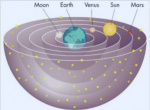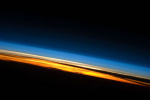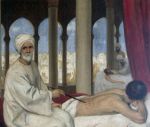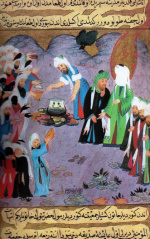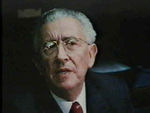Among the many and diverse matters discussed in or touched upon by Islamic scriptures are topics of direct or indirect scientific interest. These topics include reproductive science, embryology, cosmology, and medicine, among others.
Overview
Discussions on the religion of Islam and science usually revolve around pieces of Islamic scripture which appear to comment on or imply something related to topics of modern scientific interest. Though there is increasing resistance to the concept, some modern Islamic scholars argue that these portions of scripture, read in the orthodox literal manner, meet and even forecast the findings of modern science. Critics argue to the contrary and cite historical research, all of which indicates that the Quran drew on the proto-scientific ideas circulating in the world during, and often from well before, the seventh century.
Among the many and diverse matters discussed in or touched upon by Islamic scriptures are topics of direct or indirect scientific interest. These topics include reproductive science, embryology, cosmology, medicine, and a slew of other topics. While mainstream academic scholars and scientists have found the discussion of these topics contained in Islamic scripture to be unremarkable in its seventh-century context, in recent times, many traditional Muslim scholars and figures have argued that Islamic scriptures contains statements which not only adhere to but also predict modern science. Criticism of these ideas has been widespread and has even come from Muslim scholars themselves.
In recent times, many Muslim scholars have interpreted certain Quranic verses as being miraculously predictive of modern scientific discoveries and have presented these interpretations as evidence of the Quran's divine origin. Interestingly, no verse contained in the Quran has ever prompted a scientific discovery, and modern Muslim scholars have also generally not tried to argue that this has ever been the case. This article also covers alleged Historical miracles in the Quran, another popular topic.
A common criticism of the Quran, as with the Hadith, is that it contains numerous scientific and historical errors, with no obvious attempts to differentiate its understanding of the natural world and historical events from the common folklore and misconceptions of the people living in 7th century Arabia. Modern responses typically appeal to metaphor, alternative meanings, or phenomenological interpretations of such verses.
A common criticism of the Hadith, as with the Quran, is that they contain numerous scientific and historical errors, with no obvious attempts to differentiate their understanding of the natural world and historical events from the common folklore and misconceptions of the people living in 7th century Arabia. Modern responses typically appeal to metaphor, alternative meanings, or phenomenological interpretations of such hadiths.
Biology
Most Islamic scholars read in literal terms the accounts found in the Quran regarding the original creation of mankind, reproductive science, and other passages which, when read literally, appear to be of biological interest. It has, as a result, been extremely challenging for modern Islamic scholars to come to terms with recent discoveries made in evolutionary and reproductive science. Attempts to achieve this reconciliation have, however, not been wanting and have formed the subject of heated polemical exchanges.
Islamic scriptures state that Adam, the first human being and man, was created from clay. The Islamic scholarly tradition has read this, as with the rest of scripture, in literal terms. In modern times, some Islamic scholars have argued that there is scientific merit to the idea. Historians, on the other hand, see the idea of creation from clay as yet another adaption of a widespread ancient myth.
The Quran contains a detailed account of what Muhammad understood to be the process of embryological development. This account has received immense attention from modern Islamic scholars who have argued that it is scientifically sound. Outside the Saudi-financed publications of a handful of Western scientists, the scientific community has found these ideas to have no special scientific or historical merit.
Some believe that descriptions in the Qur'an and hadith about fetal development have similarities with earlier concepts. In particular, ideas about the initial formation of a child as described in Islamic scriptures can be traced at least as far back as the Jewish Talmud and the ancient Greek physicians.
Islamic scriptures present a version of the creation myth found in the bible, where Adam, the first man, is created by God in heaven and then sent down to Earth along with his wife, Eve, after they sin. The vast majority of Islamic scholars have interpreted this literally, and continue to do so. As a consequence of the literalism inherent in mainstream, orthodox Islam, evolution has proven challenging to reconcile with Islamic scripture.
Towards the end of the 20th century and into the early 21st century, as part of a broad and largely Saudi-financed movement to demonstrate the concordance of Islamic scriptures and modern science, attempts have been made to not only defend the Qur'anic idea of semen production from between the sulb and the tara’ib, but also to demonstrate it as an instance of divine foreknowledge. Several specific apologies and interpretations have been proposed, critiqued, and often withdrawn.
Other articles in this section
Cosmology
The cosmology described and implied in Islamic scripture holds the earth to be the topmost of the seven earth-like terrestrial surfaces stacked (above a cosmic whale and held in place by peg-like mountains. This super structure rests in the midst of a universal ocean high above which is the throne of Allah. Between the throne and the earth are seven heavens, the bottom-most of which contains all the stars of the night sky and which, as a corporeal firmament, could collapse in pieces upon the Earth, save for the perpetual intervention of Allah. Islamic law, as outlined in Islamic scriptures, appears to be ignorant of the phenomenon of global poles. Many modern Islamic scholars, particularly those in the West, have made efforts to reinterpret Quranic cosmology to reconcile it with modern science.
Islamic cosmology draws on the cosmologies of its ancient neighbors and predecessors while being at the same time notably less sophisticated, developed, and accurate than the cosmologies of the Greeks and Romans. Islamic scholars of the past, reading scriptures literally, accepted at face value the descriptions found in religious scriptures of seven stacked disks, a sky-firmament, a universe centered around the Earth, the identity of stars and meteors, and a universe seated atop a cosmic ocean-dwelling whale and below the throne of God.
Islamic scriptures imply, adhere to, and describe a flat-Earth cosmography (arranged in a geocentric system) which conceives of the earth as existing in the form of a large plane or disk. While some medieval Islamic authorities maintained that the earth existed in the shape of a "ball", such notions are entirely absent in the earliest Islamic scriptures and sources.
The Islamic whale (in Arabic الحوت الإسلامي, al-hoot al-islami), is a mythological creature described in Islamic texts that carries the Earth on its back. It is also called Nun (نون), which is also the name of the Arabic letter "n" ن. Two alternative names of the whale are Liwash and Lutiaya. The details behind the mentioning of this creature is a unclear topic. In the Quran, the meaning of the Nun is not specified. However, there is considerable mention of it in other Islamic scriptures such has Hadith and Tafsir along with context verses.
A number of verses in the Qur'an describe the sun and moon in ways that clearly present a form of geocentric conception of the cosmos. This was the prevailing understanding of the universe prior to the 16th century when Copernicus helped explain and popularize a sun-centered (heliocentric) view of the universe.
Islamic scriptures describe the Earth as being the topmost of seven terrestrial disk existing at the top of the cosmic whale known as al-hoot al-islami, or The Islamic Whale, which swims about universal ocean. These disks are said to be held to whale's back by the mountains, which act as pegs. While further detail on these disks is scant, some, less well-attested scriptures describe the lower disks as inhabited by progressively more bizarre creatures. Modern science has learned nothing that would suggest the accuracy of these ideas.
According to Islamic laws set out in the Qur'an and hadith, the keeping and breaking of a fast and the times of prayer, among other things, are related to times of sunrise and sunset. As one gets closer to the North or South Pole, the day or night can extend to up to several months each. At the North Pole itself, daylight or darkness lasts for six months at a time. Fasting and the daily prayers at high latitudes becomes harder and eventually impossible, to the extent that extra-scriptural rules had to be invented.
Other articles in this section
Islamic practices and rituals
Islamic medicinal practices draw almost exclusively on the folk medicine of 7th century Arabia. In reading scriptures literally, Islamic scholars devised an entire literature on "the medicine of the prophet", or tibb al-nabi. Islamic law also ritually prescribes devotional practices known to 7th century Arabs, such as the hijab and fasting, which, in recent scientific studies, have been shown to have a detrimental impact on adherents' physical, financial, and social health. In other cases, as with the legality and even encouragement of cousin marriage, Islamic law permanently legalized practices which were later discovered to lack scientific merit. While a minority of modern Islamic scholars have spoken out on these topics of growing controversy in the Muslim world, the remainder have persisted in encouraging and authorizing them.
Islamic scriptures instruct a variety of medicinal practices that have consequently been practiced through centuries, including consuming cumin, drinking camel urine, consuming honey, using indian incense, dipping houseflies in drinks, cupping, and more.
Islamic fasting (sawm) entails fasting from sunrise till sunset without any water or food. In the month of Ramadan, Muslims are obligated to fast the entire month. Empirical research has found the consequences of Islamic fasting (as it is practiced) on practitioners' health, society, and economy to be largely (but not entirely) adverse.
It is generally agreed Muslim women are obligated by Islam to cover all parts of their body excluding their faces, hands, and sometimes feet. Empirical research has found that this practice has largely adverse effects on its practitioners' health and society. Adverse health effects primarily include Vitamin D deficiency as well as the enabling of obesity.
First cousin marriages, permissible in and even encouraged by Islamic law, are extremely common in Muslim-majority countries. Muhammad married his first cousin (also the ex-wife of his adopted son) Zaynab. Today, consanguine (blood related) marriages comprise the majority in Upper Egypt, Iraq, Jordan, Kuwait, Qatar, Saudi Arabia, Sudan, Syria, the UAE, and other Muslim populations.
Several authentic (sahih) hadith and early Islamic sources contain reports of Muhammad advancing camel urine as a cure for illnesses. Many modern Islamic scholars stand by this practice until today.
A hadith in
Bukhari reports that Muhammad said, "If a house fly falls in the drink of anyone of you, he should dip it (in the drink), for one of its wings has a disease and the other has the cure for the disease." The practice described in this report is interpreted literally and still encouraged by some Islamic scholars.
Prominent figures and movements
Public figures who have spoken openly and enthusiastically on Islam and science have tended to attract controversy, whether Muslim or non-Muslim. The most prominent Muslim speakers to speak on Islam and science include the preachers Zakir Naik, Hamza Tzortzis, and Harun Yahya, all three of whom have, since their public inception, become infamous to a greater or lesser degree. The two non-Muslim scientists who have produced academic publications on Islam and science, Keith Moore and Maurice Bucaille, were at various points directly patronized by the Saudi Arabian government and have attracted derision from the wider scientific community.
A medical doctor by training, Naik is famous for theorizing and employing correlations between Islamic scripture and modern science for the purpose of dawah, or evangelism.
In the 1980s he accepted an invitation by the Embryology Committee of King Abdulaziz University to produce a special 3rd edition of his most successful book The Developing Human specifically for use by Muslim students in Islamic Universities. The additions to the text for this new edition were those of co-author Abdul Majeed al-Zindani. Moore's name is frequently cited by modern Islamic scholars.
Bucailleism is a term used for the movement to relate modern science with religion, principally Islam. Named after the French surgeon Maurice Bucaille, author of The Bible, the Quran and Science, Bucaillists have promoted the idea that the Quran is of divine origin, arguing that it contains scientifically correct facts, and that "one of the main convincing evidences" that lead many to convert to Islam "is the large number of scientific facts in the Quran."
